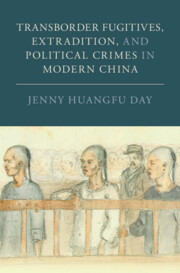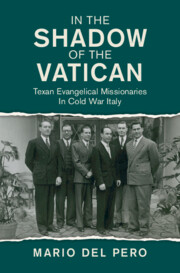Refine search
Actions for selected content:
237 results
Chapter 8 - Doris Lessing
- from Part III - From Crisis to Hope: Utopian Aesthetics
-
-
- Book:
- The Cambridge Companion to British Utopian Literature and Culture since 1945
- Published online:
- 18 December 2025
- Print publication:
- 31 January 2026, pp 159-177
-
- Chapter
- Export citation
4 - Cultural Exchanges
-
- Book:
- Cold War Comrades
- Print publication:
- 08 January 2026, pp 156-197
-
- Chapter
- Export citation
General Conclusion and Extrapolations
- from Part III - Labor Empires under Attack
-
- Book:
- Empires of Labor
- Published online:
- 30 November 2025
- Print publication:
- 18 December 2025, pp 271-279
-
- Chapter
- Export citation
Chapter 9 - Experiments in Left Populism
- from Part II - The Revolutionary People
-
-
- Book:
- 'The People' and British Literature
- Published online:
- 11 December 2025
- Print publication:
- 11 December 2025, pp 141-156
-
- Chapter
- Export citation
6 - From Civic to Ethnic Grounding of Nationhood
-
- Book:
- Nationalism as a Way of Life
- Published online:
- 11 December 2025
- Print publication:
- 11 December 2025, pp 182-212
-
- Chapter
- Export citation
Demarcating “religion” in relation to Islam and Communism: the Japanese Imperial Diet debates on the inclusion of Islam in the Religious Organizations Law of 1939
-
- Journal:
- International Journal of Asian Studies , First View
- Published online by Cambridge University Press:
- 04 December 2025, pp. 1-18
-
- Article
-
- You have access
- Open access
- HTML
- Export citation
17 - Popular Front Aesthetics, Imperialism, and the People
- from Part III - Figures, Movements, and Histories: 1900–1945
-
-
- Book:
- The Cambridge Companion to British Literature and Empire
- Published online:
- 20 November 2025
- Print publication:
- 04 December 2025, pp 244-256
-
- Chapter
- Export citation
10 - The Division of Korea
- from Part IV - The High Cold War in Asia
-
-
- Book:
- East Asia and the Modern International Order
- Published online:
- 25 November 2025
- Print publication:
- 20 November 2025, pp 187-206
-
- Chapter
- Export citation
9 - Revolution and Intervention, 1917–1920
-
- Book:
- Distant Friends and Intimate Enemies
- Published online:
- 30 October 2025
- Print publication:
- 20 November 2025, pp 179-195
-
- Chapter
- Export citation

Moral Autopsy
- Truths, Secrets, and the Judicial Afterlives of Communist Secret Service Archives
-
- Published online:
- 18 November 2025
- Print publication:
- 30 October 2025
1 - The Emerging Crisis (to December 1964)
-
- Book:
- Waging Peace
- Published online:
- 03 November 2025
- Print publication:
- 13 November 2025, pp 8-38
-
- Chapter
- Export citation

Transborder Fugitives, Extradition, and Political Crimes in Modern China
-
- Published online:
- 10 November 2025
- Print publication:
- 30 October 2025
2 - Spies, Masons, and “Purely Communist”
-
- Book:
- In the Shadow of the Vatican
- Published online:
- 23 October 2025
- Print publication:
- 06 November 2025, pp 60-90
-
- Chapter
- Export citation

Distant Friends and Intimate Enemies
- A History of American-Russian Relations
-
- Published online:
- 30 October 2025
- Print publication:
- 20 November 2025
Chapter 3 - Marx
- from Part II - Morality Critique
-
- Book:
- Modern Moral Philosophy in the Nineteenth Century
- Published online:
- 15 November 2025
- Print publication:
- 30 October 2025, pp 101-122
-
- Chapter
- Export citation
7 - Republican China’s Quest for Judicial Sovereignty and the Criminalization of Communism
-
- Book:
- Transborder Fugitives, Extradition, and Political Crimes in Modern China
- Published online:
- 10 November 2025
- Print publication:
- 30 October 2025, pp 180-209
-
- Chapter
- Export citation
Introduction - Moral Autopsy after Communism
-
- Book:
- Moral Autopsy
- Published online:
- 18 November 2025
- Print publication:
- 30 October 2025, pp 1-54
-
- Chapter
- Export citation
1 - Judicializing and Dissecting Communism at the “End of History”
- from Part I - Contextualizations
-
- Book:
- Moral Autopsy
- Published online:
- 18 November 2025
- Print publication:
- 30 October 2025, pp 57-92
-
- Chapter
- Export citation

In the Shadow of the Vatican
- Texan Evangelical Missionaries in Cold War Italy
-
- Published online:
- 23 October 2025
- Print publication:
- 06 November 2025
Circulating Violence: Guerre contre-révolutionnaire as the Intellectual Foundation of Modern Torture
-
- Journal:
- Comparative Studies in Society and History , First View
- Published online by Cambridge University Press:
- 17 October 2025, pp. 1-27
-
- Article
-
- You have access
- Open access
- HTML
- Export citation
